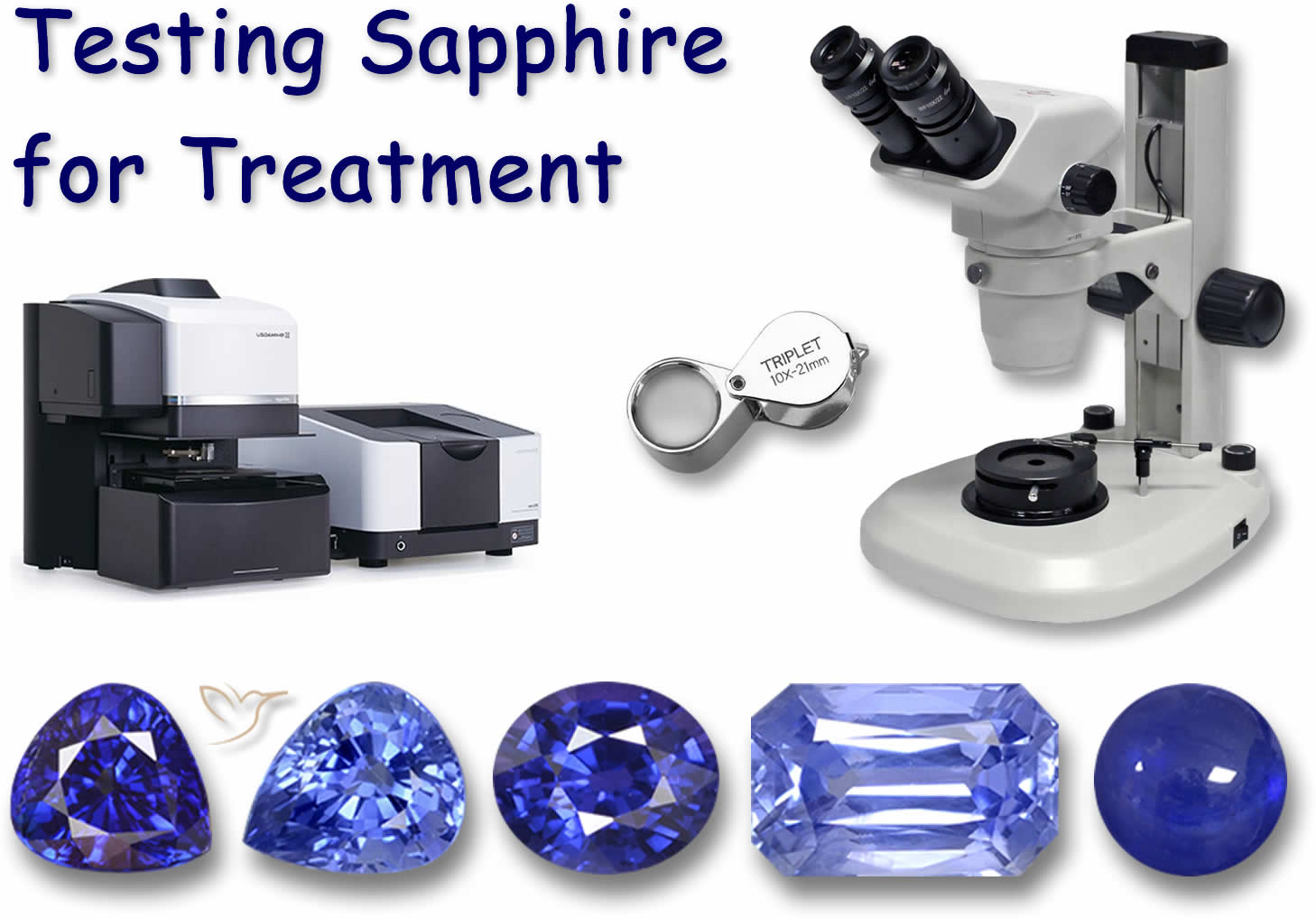How to Determine if a Sapphire is Treated or Untreated

Introduction
Sapphires are the rock stars of the gemstone world, dazzling us with their deep blues and sparkling brilliance. But here’s the catch: not every sapphire is as "natural" as it seems. Many undergo treatments to boost their color or clarity, which can impact their value. Knowing whether a sapphire is treated or untreated is key to making smart choices when buying or evaluating these gems. For a deeper dive into their properties, check out our Sapphire Gemstone Information. Let’s dive into this guide to answer: How can you tell if a sapphire is treated or untreated?
Common Sapphire Treatments
Sapphires often get a little "makeover" to enhance their appeal. Here’s a rundown of the most common treatments you’ll encounter, which can also affect Sapphire Prices.
Heat Treatment
Heat treatment is the go-to method for giving sapphires a glow-up. By heating stones to super-high temperatures, gemologists can dissolve inclusions, ramp up color vibrancy, and improve clarity. It’s like giving a dull sapphire a new lease on life, making it a staple in the industry.
Diffusion Treatment
Diffusion treatment is like adding a splash of paint to a sapphire’s surface. Chemicals like titanium or beryllium are used to tweak the color, creating stunning hues like padparadscha or vivid blue. The catch? The color might not be even, and the stone’s durability could take a hit.
Beryllium Treatment
A subset of diffusion, beryllium treatment uses beryllium to create eye-catching colors. While the results can be striking, these sapphires might show uneven color patches or durability issues, so careful inspection is a must.

Surface Coating
Surface coating is like putting a temporary tattoo on a sapphire. A thin layer of colored substances, like titanium oxide, is applied to boost color. It looks great at first, but the coating can wear off, leaving the stone less vibrant and less valuable.
Pro tip: Always check the gemstone’s details for treatment labels. Reputable sellers will clearly state if a sapphire has been treated, so you know exactly what you’re getting. To learn more about evaluating stones, see our guide on Sapphire Quality.
Methods for Identifying Treated Sapphires
Spotting a treated sapphire takes some detective work. Here are the key methods gemologists use to uncover treatments, which are essential when considering Investing in Sapphire.
Visual Inspection
- Color Zones: Treated sapphires might show unnatural color banding or uneven hues due to chemical tweaks.
- Inclusions: Natural sapphires have unique inclusions that treatments can alter or hide. Look for signs of artificial inclusions.
- Uneven Color: Patches or inconsistent color can scream “treatment!” - a red flag for savvy buyers.
Microscopic Examination
- Fingerprint Inclusions: Natural sapphires often have fingerprint-like inclusions that treatments disrupt. A microscope can reveal these changes.
- Growth Patterns: Treated stones might show altered growth patterns, giving clues about their treatment history.
Spectroscopic Analysis
- Absorption Spectra: This technique spots chemical changes by analyzing how a sapphire absorbs light.
- Fluorescence: Under UV light, treated sapphires may glow differently than untreated ones, helping identify treatments.
Chemical Testing
- Acids: Immersing a sapphire in acids can reveal treatments based on how the stone reacts.
- UV-Vis-NIR Spectroscopy: This advanced method analyzes a sapphire’s spectral signature to detect subtle treatment signs.
Factors Influencing Detectability
Not all treatments are easy to spot. Here’s what affects how tricky it can be to identify them.
- Treatment Quality: High-quality treatments are tougher to detect, while sloppy ones leave obvious clues.
- Gemologist Expertise: A skilled gemologist with the right tools and know-how is crucial for accurate detection.
- Advanced Techniques: As treatments get sneakier, gemologists need cutting-edge methods to keep up.
Frequently Asked Questions
- Are treated sapphires less valuable?
- Generally, yes - untreated sapphires are rarer and more prized. But value also depends on color, clarity, size, and origin. Curious about affordability? Explore Can I Afford a Blue Sapphire?.
- How do I know if a sapphire is untreated?
- Get a certificate from a trusted gem lab and have a gemologist check it out. Documentation is your best friend!
- Are sapphire treatments permanent?
- Some, like heat treatment, are permanent. Others, like surface coatings, can fade over time, affecting the stone’s look.
- Can I trust a seller’s claim about an untreated sapphire?
- Stick with reputable sellers who provide clear treatment details and certifications. If in doubt, get a second opinion from a gemologist.
Conclusion
Telling a treated sapphire from an untreated one is like solving a gemstone mystery. By using visual inspections, microscopes, spectroscopy, and chemical tests, gemologists can uncover a stone’s true story. Armed with this knowledge, you can shop smarter and appreciate the rare beauty of untreated sapphires. Always prioritize transparency - whether you’re buying or just admiring these stunning gems! Want to showcase your sapphire? Learn about Custom Jewelry with Sapphire.

